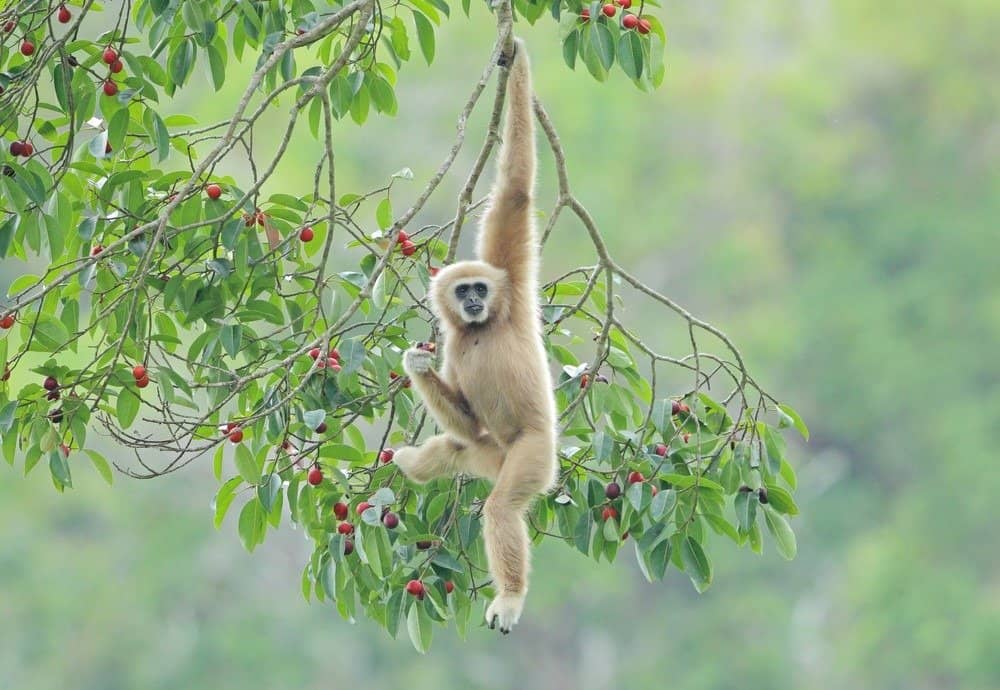This gibbon freak-out is the most hilarious thing you’ll see this month. A rat has invaded their enclosure and they have no idea what to make of it. At first, they give a little shiver just like the ones we make when we spot a mouse in our kitchen! Then, one of them tries to herd it away. With a lot of flailing of long arms, the primates are successful and the rodent is successfully sent on its way.
Where Do Gibbons Live?
The gibbons in this clip are white-handed gibbons who are also known as lar gibbons. They are found throughout the tropical rainforests of Southeast Asia. Therefore, they are a resident of countries such as Indonesia and Thailand. They can live in several different types of forests so you will find them in mixed deciduous bamboo forests, peat swamp forests, and seasonal evergreen forests. They usually live in the high canopy of the trees and the wild, they are rarely seen in understory.

Gibbons have long arms so that they can move efficiently through branches.
©teekayu/Shutterstock.com
What Do Gibbons Usually Eat?
These animals are not carnivores and therefore they did not see the rodent as a source of food. They are described as frugivorous which means that they mainly eat raw fruits and the succulent fruit-like parts of plants including shoots and nuts. Their main diet is made up of ripe fruit from woody climbing plants and tropical trees. However, they will also happily eat leafy plants and flowers and if they come across an insect, they will eat that too!
These gibbons are quite fussy eaters! They have been seen tasting fruit and will reject it if they are not happy with how it tastes. They can be seen returning to the same tree many times over several weeks until the fruit is ripe enough for them to eat.
Why Do Gibbons Have Such Long Arms?
Gibbons have specially adapted arm, hand, and shoulder anatomy to help them swing from branch to branch through the trees. This is a special type of movement called brachiation.
Of all the primates, gibbons have the longest arms about their body size. This enables them to change direction quickly. Gibbons have been recorded traveling at 35 mph through trees and swinging themselves over a distance of 50 feet to reach another branch!
They also weigh very little, and their delicate build allows them to collect fruit from thin branches.
Watch the Hilarious Clip Below
The photo featured at the top of this post is © Edwin Butter/Shutterstock.com
Thank you for reading! Have some feedback for us? Contact the AZ Animals editorial team.







